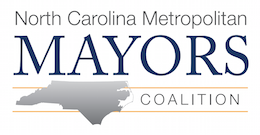USDOT Receives Applications Worth 32 Times the Available Funds (AASHTO)
Nearly 1,000 transportation grant applications were submitted from every state and territory for more than $19 billion worth of projects, far exceeding the $600 million in Transportation Investment Generating Economic Recovery dollars the U.S. Department of Transportation can award for round two of this program, the department announced this morning.
Applications were due in August, but USDOT did not release information about them until today due to a lengthy process of sorting through all the applications.
The overwhelming demand for TIGER II grants continues a trend. This past February, USDOT announced 51 grant awards from nearly 1,500 applications for the first round of TIGER grants. (see Feb. 19 AASHTO Journal story) The TIGER I requests were for almost $60 billion worth of projects, 40 times the $1.5 billion available under that program. The TIGER II requests announced today are for almost 32 times the $600 million appropriated by Congress for this fiscal year.
“The wave of applications for both TIGER II and TIGER I dollars shows the backlog of needed infrastructure improvements and the desire for more-flexible funds,” U.S. Transportation Secretary LaHood said in a statement. “This also shows the opportunities still before us to create jobs, to reduce congestion, make wise environmental choices, and help generate lasting economic growth.”
The $600 million in TIGER II grants is for capital investment in surface transportation projects. Up to $35 million can be used for planning grants. USDOT has partnered with the U.S. Department of Housing and Urban Development to offer TIGER II planning grants along with HUD’s $40 million in Community Challenge Planning Grants. Almost 700 applications were received for DOT or HUD planning grants. HUD’s funds can be used for localized planning efforts, such as development around a transit stop and zoning or building code updates and improvements.
Combining these funds will provide applicants with one-stop shopping and greater consistency for community development projects that include both transportation and housing or economic development components, according to USDOT. The two Departments, along with assistance from the U.S. Environmental Protection Agency and the U.S. Department of Agriculture, will participate in the evaluation of the planning grant applications.
TIGER II grants will be awarded on a competitive basis to projects that have a significant impact on the nation, a region, or metropolitan area. High-ranking projects will contribute to the long-term economic competitiveness of the nation, improve the condition of existing transportation facilities and systems, increase energy efficiency and reduce greenhouse-gas emissions, improve the safety of U.S. transportation facilities, and/or enhance the quality of living and working environments of communities through increased transportation choices. USDOT will also give priority to projects that are expected to create and preserve jobs quickly and stimulate rapid increases in economic activity.
Questions regarding this article may be directed to editor@aashtojournal.org.


